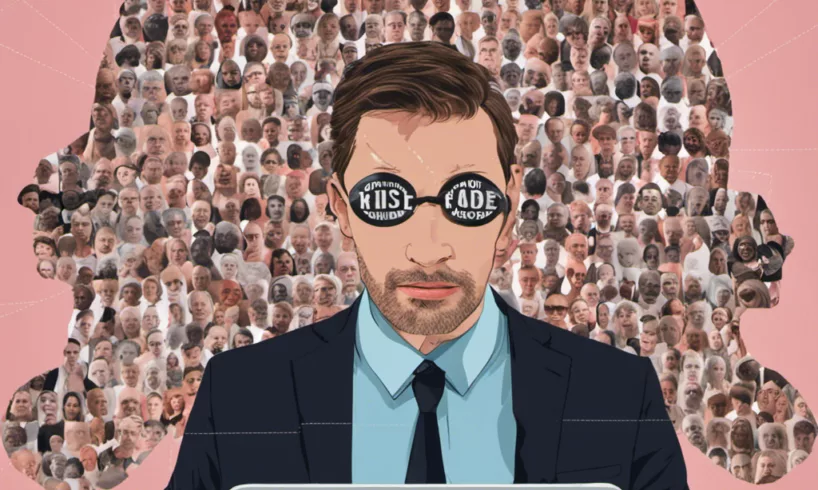
How AI-powered technology is blurring the line between reality and fiction
In an era defined by technological advancements, a new threat has emerged that challenges the very fabric of truth and authenticity. Deepfakes, a term coined from “deep learning” and “fake,” have become a cause for concern as they enable the manipulation of video and audio content, blurring the line between reality and fiction. This article delves into the intricacies of deepfake technology, the concerns it raises, and the efforts being made to combat its potential for misinformation and deception.
The Mechanics of Deepfakes: A Digital Magic Trick
Deepfakes operate through the complex interplay of two algorithms – a generator and a discriminator – within a generative adversarial network (GAN). The generator algorithm produces initial fake content, mimicking the appearance, voice, or behavior of a target individual. The discriminator algorithm then analyzes the content, determining its authenticity. This feedback loop between the generator and discriminator continually refines the fake content, making it increasingly difficult to distinguish from reality.
The Concerns Surrounding Deepfakes
Misinformation and Disinformation:
Deepfakes pose a significant risk in the spread of false information. With the ability to create convincing videos or audio recordings of individuals saying or doing things they never did, deepfakes can damage reputations and manipulate public opinion.
Privacy Invasion:
The manipulation of innocent people’s images or voices for malicious purposes raises serious privacy concerns. Deepfakes have the potential to violate individuals’ privacy, leading to harassment, blackmail, or exploitation.
Election Interference:
The use of deepfakes to manipulate political events is a growing concern. Fake speeches or interviews during elections could sway public perception, undermining the democratic process.
Crime and Fraud:
Criminals can exploit deepfake technology to impersonate others, making it difficult for authorities to identify and prosecute the culprits. This opens the door to various fraudulent activities.
Cybersecurity:
As deepfake technology advances, detecting and preventing cyberattacks that rely on manipulated videos or audio recordings becomes increasingly challenging. The potential for cyber threats to exploit deepfakes is a significant concern.
Preventing and Detecting Deepfakes
Researchers and tech companies are actively working on methods to detect and mitigate the impact of deepfakes. Algorithms and software are being developed to identify inconsistencies in manipulated content and verify its authenticity.
Here are seven tips for identifying deepfake audio and video:
1. Inconsistencies in Facial Expressions and Movements: Pay attention to unnatural or out-of-sync facial expressions, blinking patterns, or unusual movements.
2. Lip Sync Errors: Look for discrepancies between the spoken words and lip movements, as deepfake technology may not always synchronize audio perfectly with the video.
3. Unusual Lighting and Shadows: Analyze the lighting and shadows in the video, as deepfake content may have inconsistencies that reveal manipulation.
4. Blurry or Misaligned Edges: Check for distorted or blurred edges around the subject’s face, indicating digital manipulation.
5. Unusual Backgrounds: Deepfakes may introduce inconsistencies in the background or surroundings, such as strange patterns, reflections, or anomalies.
6. Audio Anomalies: Look out for audio glitches, background noise, or changes in voice tone that may signal audio manipulation.
7. Use Deepfake Detection Tools: Several online tools and software applications are designed to identify deepfake content. These tools can be used to analyze media for potential manipulation.
The rise of deepfakes presents a significant challenge in an era where the authenticity of digital content is increasingly questioned. The potential for misinformation, privacy invasion, election interference, crime, and cybersecurity threats cannot be ignored. However, ongoing efforts to detect and prevent deepfakes offer hope in mitigating their impact. As technology continues to evolve, the battle against deepfakes requires a multifaceted approach involving technological advancements, public awareness, and regulatory measures to safeguard the integrity of digital media.

John Ravenporton is a writer for many popular online publications. John is now our chief editor at DailyTechFeed. John specializes in Crypto, Software, Computer, and Tech related articles.

